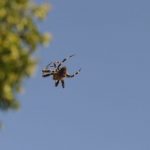 Weird Stuff
Weird Stuff  Weird Stuff
Weird Stuff  Our World
Our World 10 Ways Your Christmas Tree Is More Lit Than You Think
 Movies and TV
Movies and TV The 10 Coolest Stars to Set Sail on The Love Boat
 History
History 10 Things You Didn’t Know About the American National Anthem
 Technology
Technology Top 10 Everyday Tech Buzzwords That Hide a Darker Past
 Humans
Humans 10 Everyday Human Behaviors That Are Actually Survival Instincts
 Animals
Animals 10 Animals That Humiliated and Harmed Historical Leaders
 History
History 10 Most Influential Protests in Modern History
 Creepy
Creepy 10 More Representations of Death from Myth, Legend, and Folktale
 Technology
Technology 10 Scientific Breakthroughs of 2025 That’ll Change Everything
 Weird Stuff
Weird Stuff Ten Bizarre Facts About The Doge Meme
 Our World
Our World 10 Ways Your Christmas Tree Is More Lit Than You Think
 Movies and TV
Movies and TV The 10 Coolest Stars to Set Sail on The Love Boat
Who's Behind Listverse?

Jamie Frater
Head Editor
Jamie founded Listverse due to an insatiable desire to share fascinating, obscure, and bizarre facts. He has been a guest speaker on numerous national radio and television stations and is a five time published author.
More About Us History
History 10 Things You Didn’t Know About the American National Anthem
 Technology
Technology Top 10 Everyday Tech Buzzwords That Hide a Darker Past
 Humans
Humans 10 Everyday Human Behaviors That Are Actually Survival Instincts
 Animals
Animals 10 Animals That Humiliated and Harmed Historical Leaders
 History
History 10 Most Influential Protests in Modern History
 Creepy
Creepy 10 More Representations of Death from Myth, Legend, and Folktale
 Technology
Technology 10 Scientific Breakthroughs of 2025 That’ll Change Everything
10 Incredible Animals That Can Switch Their Sex
The animal kingdom is full of wild reproductive surprises, and one of the coolest has to be some species’ ability to change their biological sex. Would you believe about 5 percent of all animal species (roughly 30 percent of non-insect species) can actually pull off this remarkable trick? While most animals are remain the sex they’re born with, these gender-fluid creatures can adapt their reproductive systems based on age, social dynamics, or environmental pressures. It’s a clever strategy that helps them maximize their reproductive success and keep their species going strong, even when times get tough.
Related: 10 Animals That Used to Be Bigger
10Clownfish
Thanks to Finding Nemo, clownfish might be the poster children for sex-changing animals. These vibrant orange and white fish are what scientists call protandrous hermaphrodites, which is just a fancy way of saying they all start life as males but can transform into females when needed. They live in strict hierarchies with just one dominant breeding pair, a female boss and her male partner. When the female dies, something fascinating happens: the largest male in the group undergoes a complete sex change to become the new female, while the next largest fish gets promoted to reproductive male. It’s nature’s way of making sure the anemone colony always has a breeding pair, even after losing its queen bee.
9Wrasse Fish
Wrasse fish (especially the bluehead wrasse) flip the clownfish script completely, they’re protogynous hermaphrodites that start as females and can switch to males when the time is right. And they don’t mess around with the change either; their ovaries transform into fully functional testes in just 8-10 days. This lightning-fast sex change typically kicks off when the alpha male of a group disappears or dies. The largest female quickly steps up, not just growing male reproductive organs but also taking on male behaviors and even changing her colors. Talk about a rapid response system to keep the social order intact./p>
8Hawkfish
These colorful reef dwellers take sexual flexibility to a whole new level. Like wrasse fish, hawkfish start as females with the potential to become males. But what makes them truly special is they can flip back and forth multiple times throughout their lives, depending on what’s happening in their social circle. This two-way sex change typically happens when a harem’s male leader has too many females to manage, prompting the largest female to step up and become male. But here’s the twist, if this newly-minted male later loses status in the pecking order, it can switch back to female. That kind of sexual plasticity is rare even among sex-switching species.
7Black Sea Bass
Black sea bass are another example of females changing to males, but they seem to be triggered by environmental cues rather than strict social rules. Research shows that female sea bass may kick off a sex change when they notice there aren’t enough males around. It’s like they’re keeping tabs on the dating pool and adjusting accordingly. Unlike the quick-change artists like wrasse fish, sea bass take their time with the transformation, developing intersex characteristics before finally completing their journey to maleness.
6Bearded Dragons
Moving away from the ocean, bearded dragons show us how the environment can override genetics when it comes to sex. These reptiles have sex chromosomes like we do, but crank up the incubation temperature, and something wild happens — genetically male embryos develop as females instead. The really interesting part? These temperature-converted females aren’t just functional; they often lay more eggs than genetic females do. This might be nature’s way of boosting the population when environmental conditions get rough.
5Humpy Shrimp
The Pandalus goniurus, or humpy shrimp, uses its sex-changing ability as a size optimization strategy. These little crustaceans begin as males and typically switch to females during their second year. The timing makes perfect sense with their growth pattern, when they’re small, they’re males, which doesn’t require much energy to produce sperm. As they bulk up, they become females, using their larger size to crank out tons of eggs. It’s basically efficient resource management, shrimp-style.
4Green Frogs
Fish might dominate this list, but amphibians get in on the action too. Green frogs (Rana clamitans) can flip their biological sex in response to environmental factors. Scientists initially thought pollution might be forcing these changes, but it turns out green frogs do this naturally even in pristine environments. This suggests it’s an evolutionary adaptation rather than some freaky response to contaminants. Researchers are still figuring out exactly what triggers these changes, but temperature shifts and population dynamics seem to play major roles.
3Pacific Oysters
Pacific oysters (Magallana gigas) are sexual Swiss Army knives. Some individuals stick with one sex, others change once, and some ambitious ones even function as simultaneous hermaphrodites—producing eggs and sperm at the same time. Their reproductive approach seems heavily influenced by how much food is available, how crowded they are, and how old they get. Most commonly, younger oysters operate as males when small and switch to females as they grow larger—another smart way of matching reproductive strategy to body size.
2Swamp Eels
The reproductive setup of swamp eels (Monopterus albus) offers yet another twist on sex change. All swamp eel babies start out as females, with some later developing into males as they mature. The process typically takes between 8-30 weeks and includes an awkward teenage-like intersex phase when both male and female reproductive tissues exist side by side. This reproductive flexibility lets swamp eel populations adjust their boy-girl ratios based on what’s happening in their environment and social circles.
1Starfish
To round out our list, starfish (particularly the starlet cushion star, Asterina gibbosa) time their sex changes with remarkable precision based on their growth. These echinoderms switch from male to female when they reach a specific size. Scientists studying this phenomenon can actually predict with scary accuracy when a starfish will change sex just by measuring its diameter. It’s another example of size-based sex allocation, where small individuals serve as sperm-producers while larger ones take advantage of their size to make eggs.








